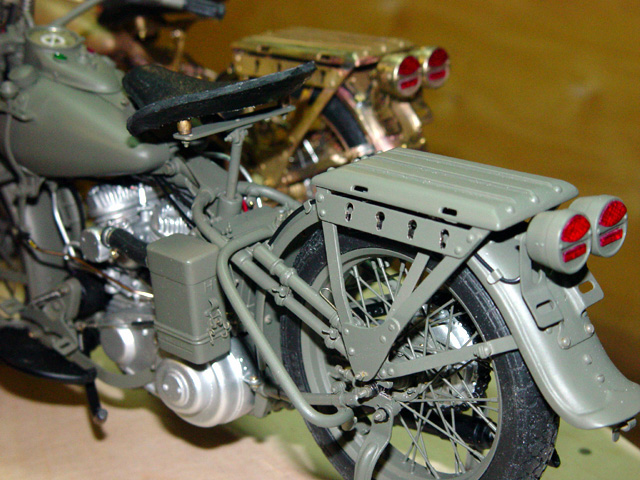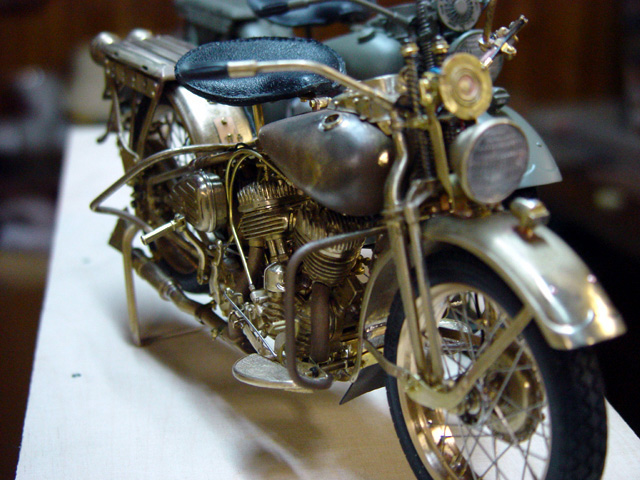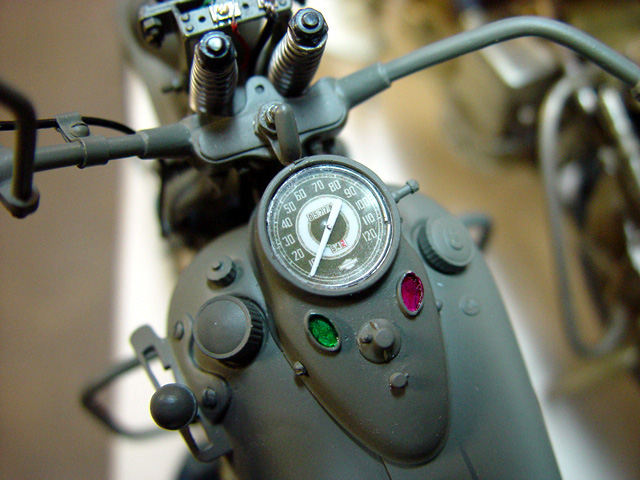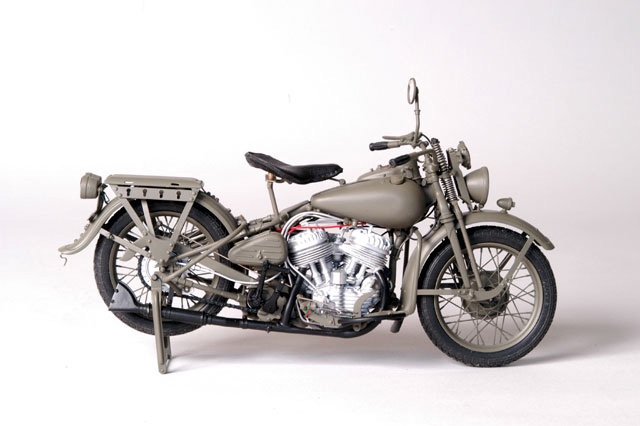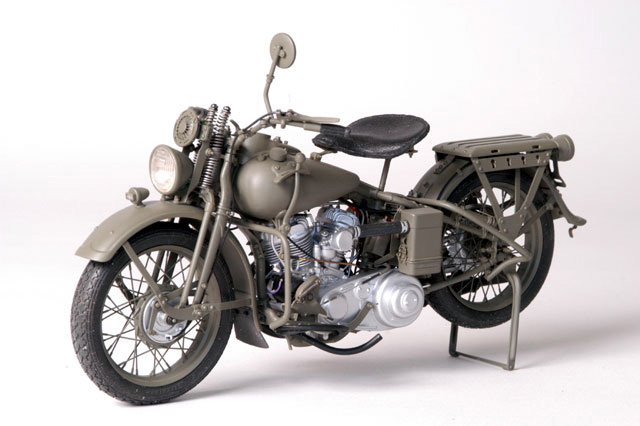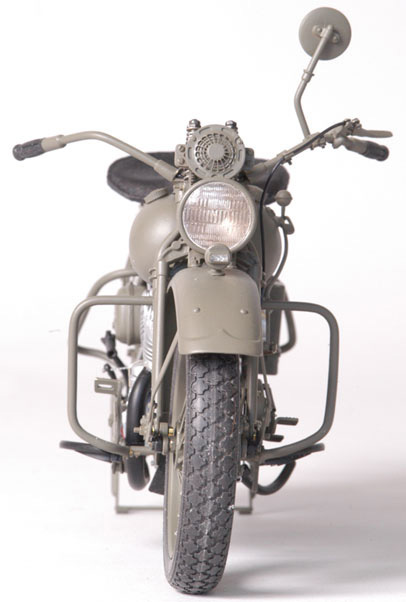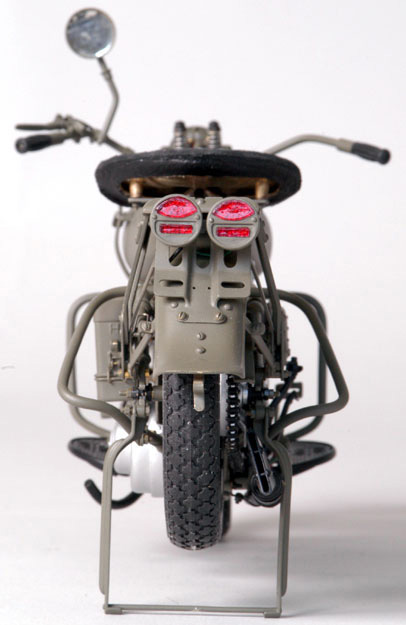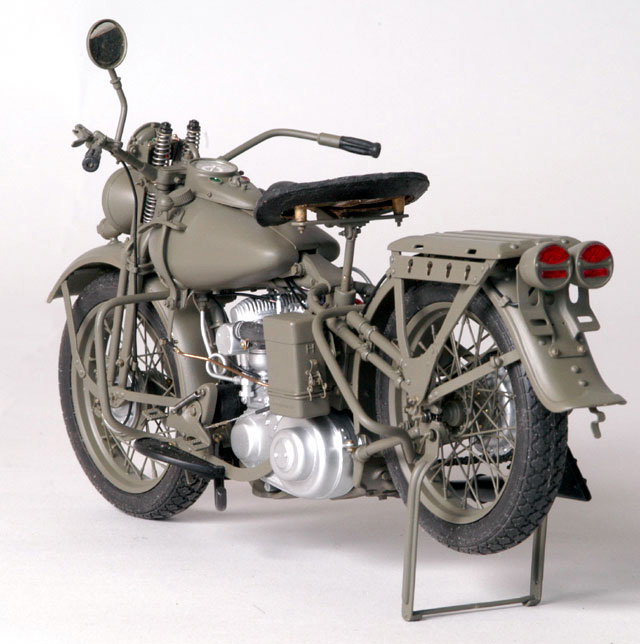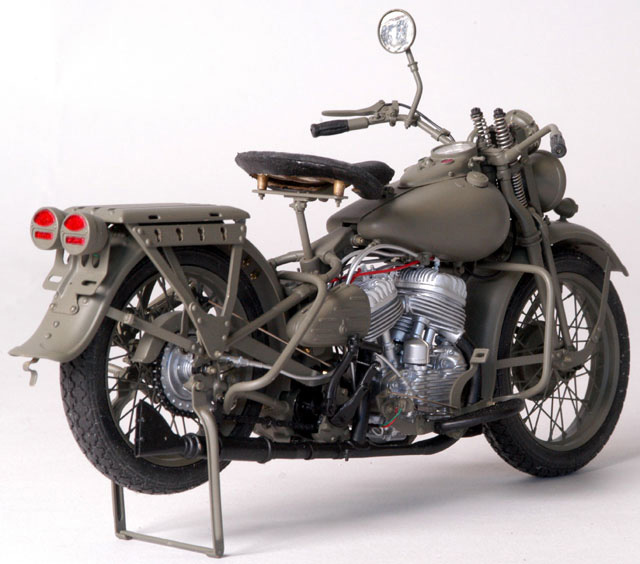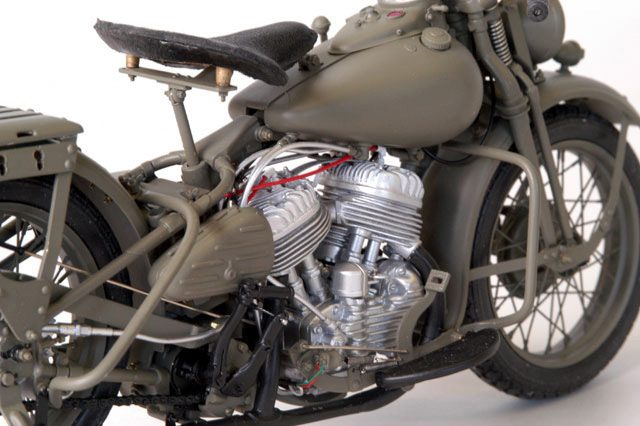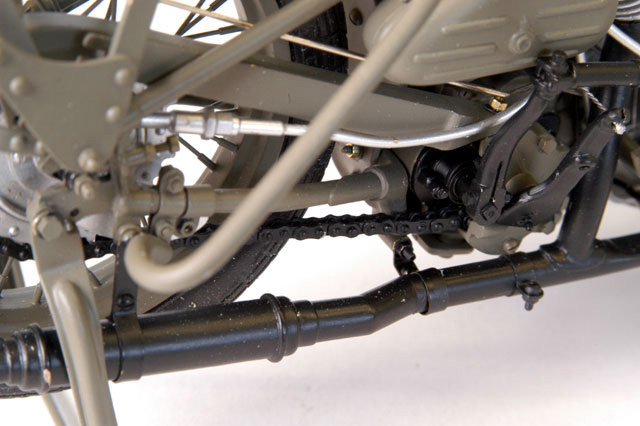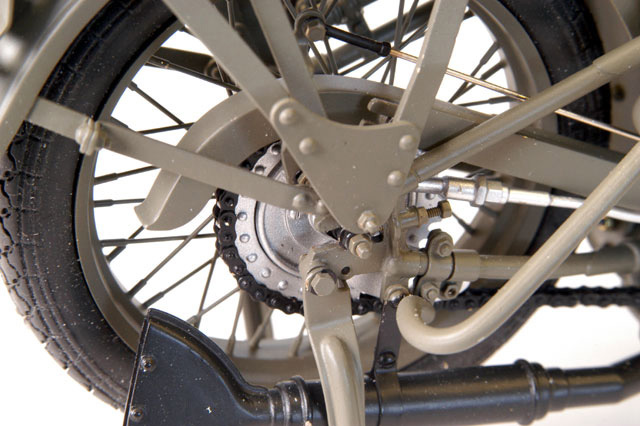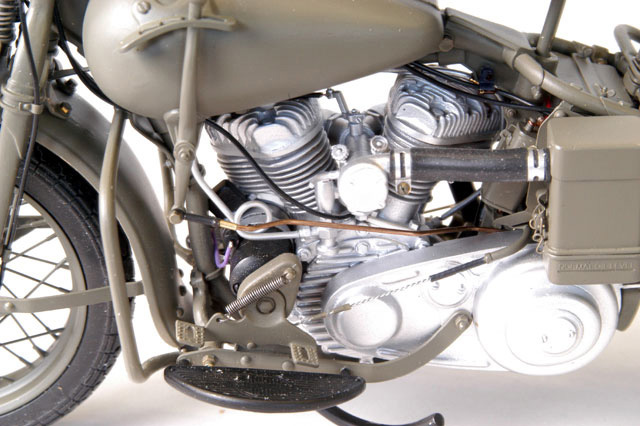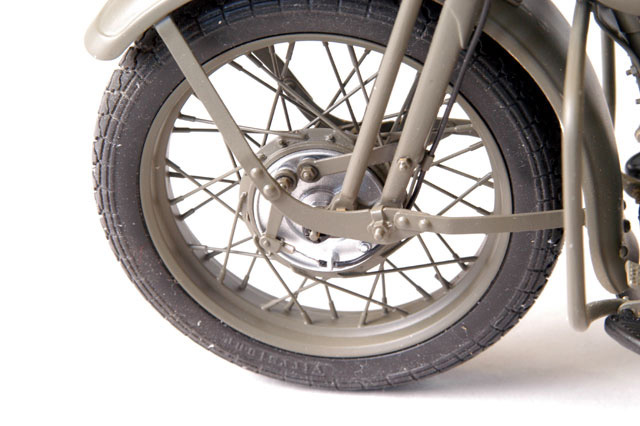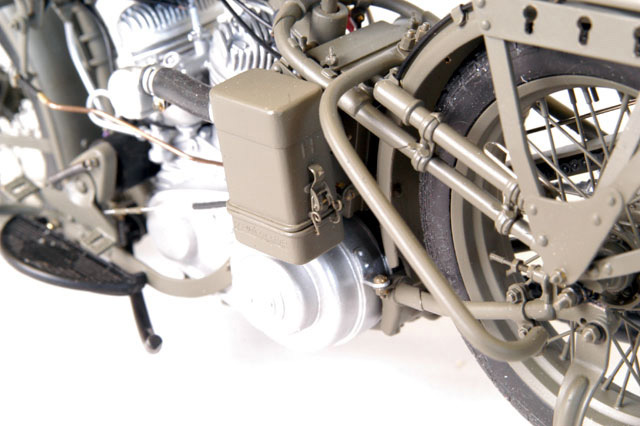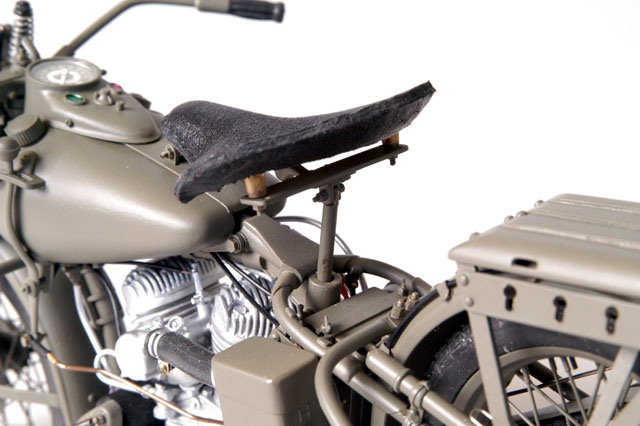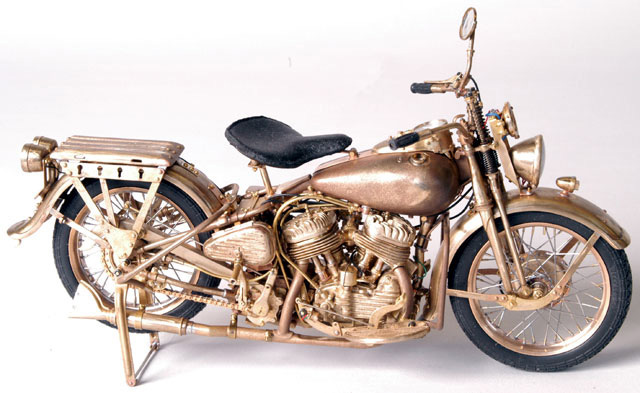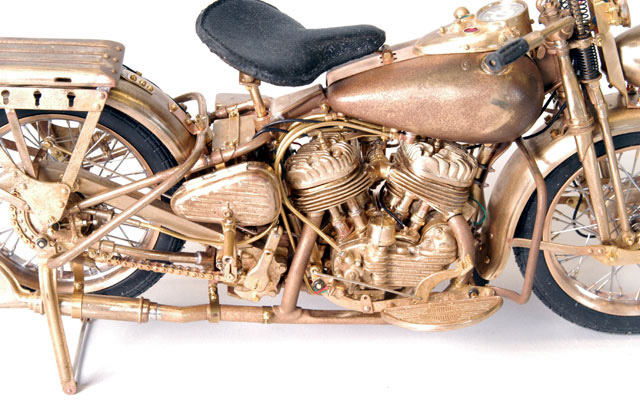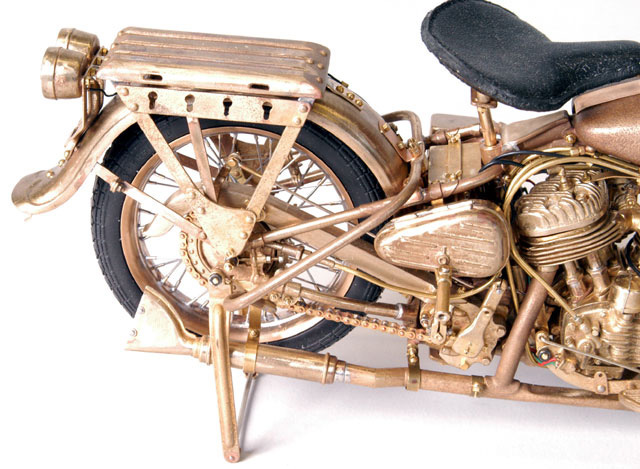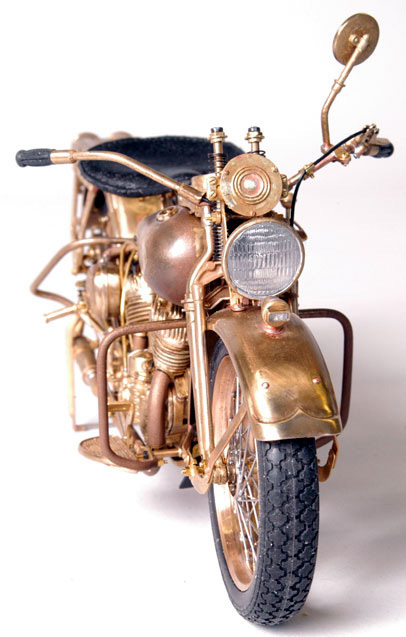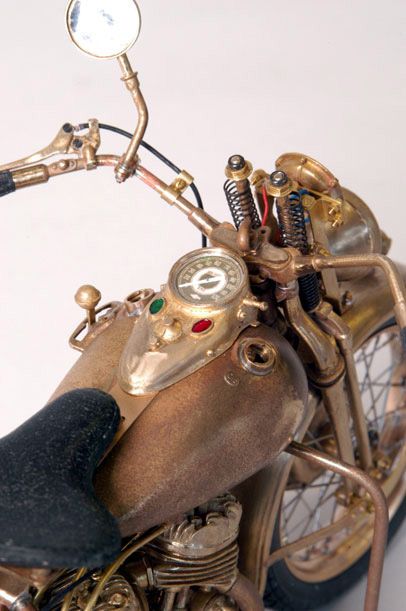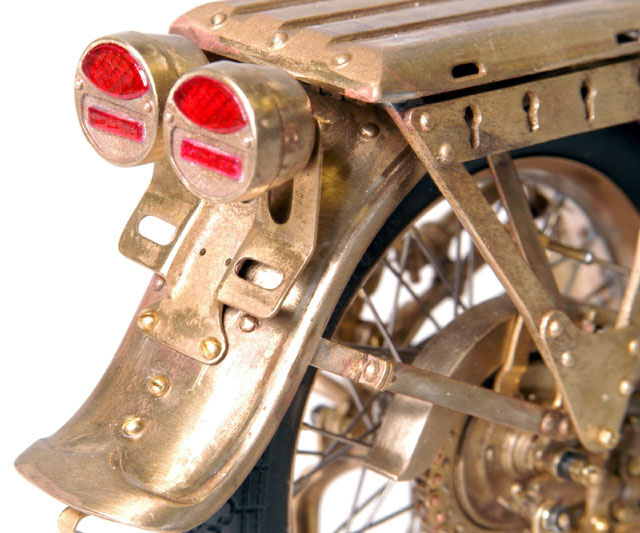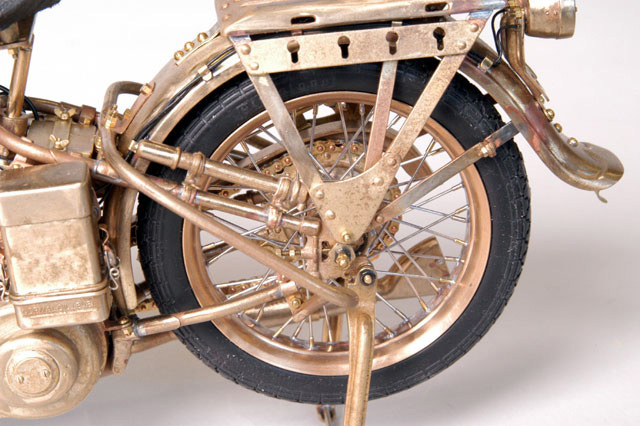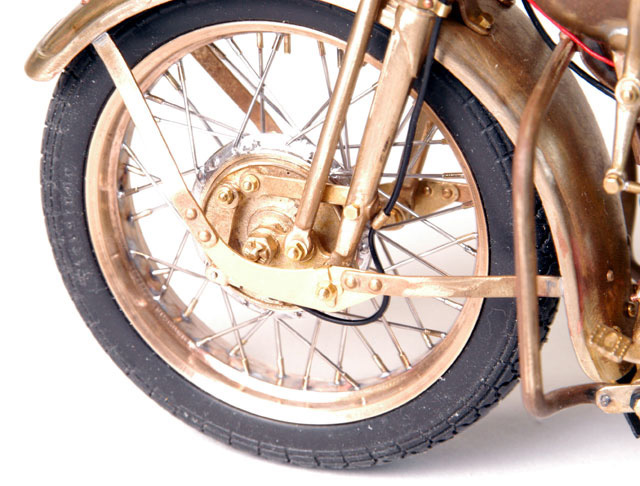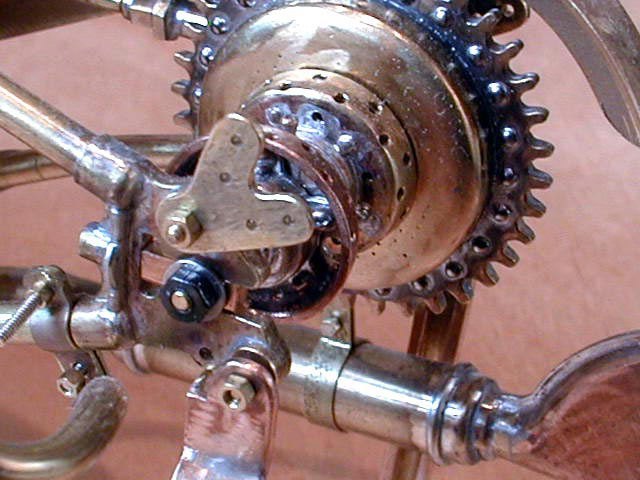WLA Cycle
Harley Davidson WLA Motorcycle, Army Edition
- Scale: 1:8
- Release: 2003
- Limited Edition: 10
- Model Size: 11”L x 4.5”W x 6”H
- Base Type: Black Walnut
- Availability: Sold Out
Harley Davidson WLA Motorcycle, Brass Edition
- Scale: 1:8
- Release: 2003
- Limited Edition: 10
- Model Size: 11”L x 4.5”W x 6”H
- Base Type: Black Walnut
- Availability: Sold Out
Harley Davidson WLA Motorcycle, Navy Edition
- Scale: 1:8
- Release: 2006
- Limited Edition: 3
- Model Size: 11”L x 4.5”W x 6”H
- Base Type: Black Walnut
- Availability: Sold Out
Harley Davidson WLA Motorcycle
Harley-Davidson began producing the WLA motorcycle, according to US Army specifications, in 1940 as World War II loomed. Based on an existing civilian model, the WLD, the WLA was called a 45 solo type for its 45 cubic-inch engine and single-rider design. Production of the WLA would cease after the war, but would be revived during the Korean War between 1949 and 1952.
The US Army would use the WLA motorcycles for police and escort work, courier duties, and some scouting, as well as limited use to transport radio and radio suppression equipment. Allied motorcycles were almost never used as combat vehicles or for troop mobility, and so were rarely equipped with sidecars as was common on the German side. Nevertheless, the WLA acquired the nickname “Liberator”, since it was seen ridden by soldiers liberating occupied Europe (to this day Belgium is a major center of WLA enthusiasm).
The engine of the WLA is a side-valve design, which is reliable though not particularly efficient in comparison to overhead-valve designs. Harley Davidson already had overhead valve engines in production for its Big Twin lines, but the “small twin” flathead design was popular in applications needing reliability more than power. This engine remained in production from 1937 to 1973 in the Servi-Car, although it was superseded in two-wheeled motorcycles by the more advanced flathead engine used in the Model K in 1952. The WLA also features springer front suspension. Harley-Davidson would not adopt telescopic front forks until after the war. The rear wheel had no suspension, giving this type of motorcycle the nickname “hard tail”.
Because the WLA was based on the civilian model WLD, Harley Davidson made various changes to transform the bike into a military model. The paint surfaces were generally painted olive drab or black and chrome, while some parts remained as unfinished aluminum. However, Harley Davidson was apparently very practical in its use of existing parts and processes, and many finishes remained in their bright civilian versions for a time, and, in some cases, for the whole production run. The WLAs were also fitted for a second set of blackout head and taillights to reduce nighttime visibility. To reduce mud clogging, the sides of the standard fenders were removed. Harley Davidson also provided a variety of accessories including a heavy-duty luggage rack (for radios), ammo box, leather Thompson submachine gun scabbard, skid plate, leg protectors, and windshield. An oil bath air cleaner, originally used for tractors and other vehicles in dusty environments, was fitted to handle the dust of off-road use and to allow easier field maintenance. Changes to the crankcase breather reduced the possibility of water intake into the crankcase.
The entry of the United States into the war saw significantly increased production: over 90,000 WLAs and countless spare parts would be produced during World War II. Harley Davidson would also produce a close WLA variant for the Canadian Army called the WLC and would also supply smaller numbers to the UK, South Africa, and other allies, as well as filling orders for different models from the Navy and Marine Corps. In addition, many WLAs would be shipped to allies under the Lend-Lease program, the largest recipient being the Soviet Union, which was sold over 30,000 WLAs.
Most WLAs in western hands after the war would be sold as surplus and “civilianized”. The number of motorcycles available at a very low cost would lead to the rise of the chopper and other modified motorcycle styles, as well as the surrounding biker culture. Many young soldiers would return home hoping to get a Harley-Davidson like he saw or rode in the service, leading to the post-war popularity of both the motorcycle and the company in general.
However, this also ensured that very few nearly original WLAs would survive in the US or even Western Europe. A significant number of WLAs were left in the Soviet Union, and either stored or put in private hands. With little access to parts, no chopper culture, and no export path to the West, many of those WLAs were preserved during the Cold War. Russia and other former Soviet countries are now a major source of WLAs and parts.
